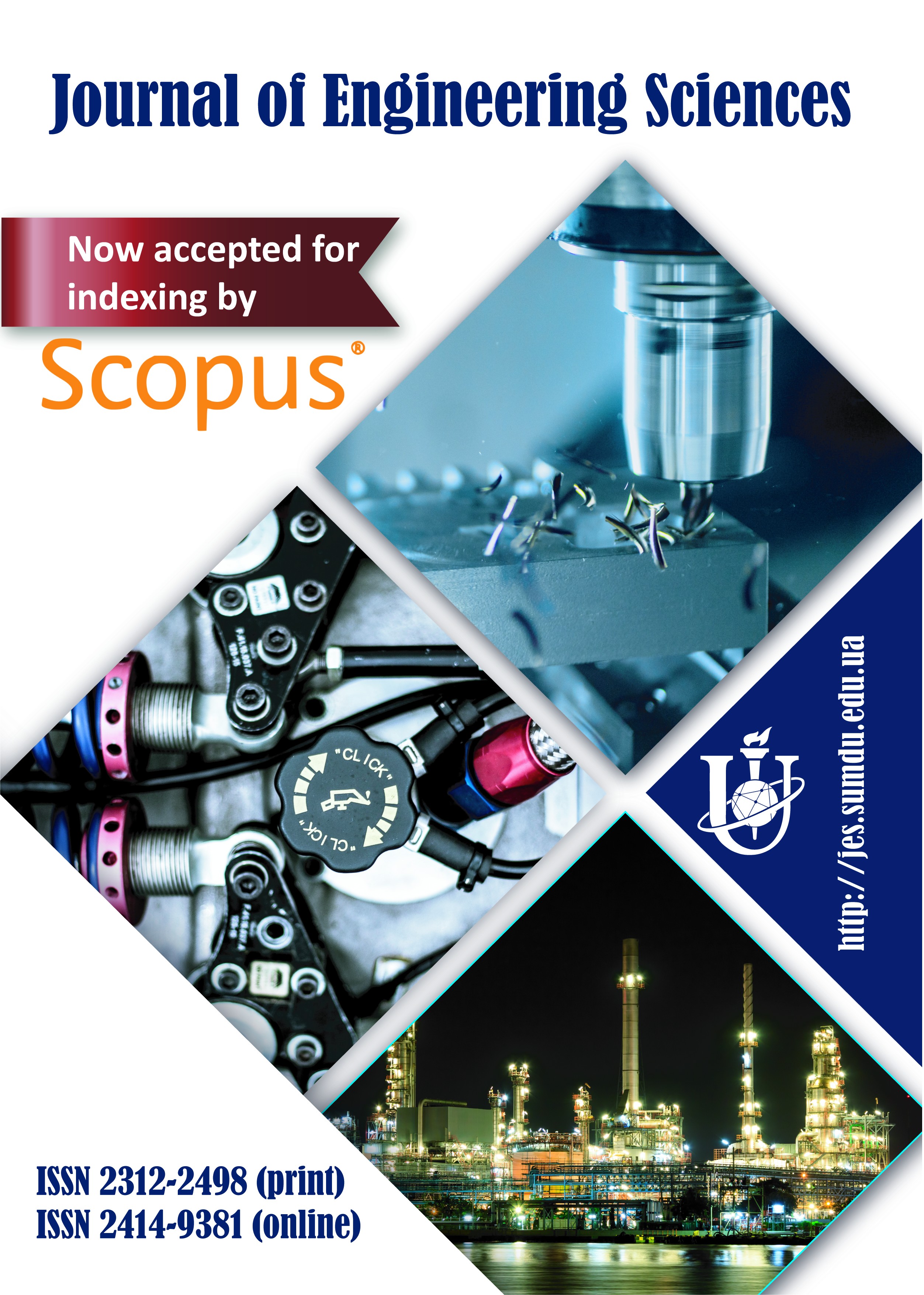Determination of a Suitable Retrofit of R-134A Using Refrigerant Blends of R290 and R600 Aided by an Optimization Technique
Author(s): Anaemeje J. C., Owuama K. C., Okafor O. C., Madu K. E.
Affiliation(s):
1 Chukwuemeka Odumegwu Ojukwu University, Uli Campus, Anambra State, Nigeria;
2 Grundtvig Polytechnic, Oba, Anambra State, Nigeria
*Corresponding Author’s Address: [email protected]
Issue: Volume 9, Issue 1 (2022)
Dates:
Submitted: March 11, 2022
Accepted for publication: May 30, 2022
Available online: June 6, 2022
Citation:
Anaemeje J. C., Owuama K. C., Okafor O. C., Madu K. E. (2022). Determination of a suitable retrofit of R-134A using refrigerant blends of R290 and R600 aided by an optimization technique. Journal of Engineering Sciences, Vol. 9(1), pp. G1-G7, doi: 10.21272/jes.2022.9(1).g1
DOI: 10.21272/jes.2022.9(1).g1
Research Area: CHEMICAL ENGINEERING: Energy Efficient Technologies
Abstract. The effect of the hydrochlorofluorocarbon (HCFC) and hydrofluorocarbon (HFC) refrigerants on the environment through the attack of its halogen contents-chlorine and fluorine, on the ozone layer and the toxic nature of such refrigerants, has paid the attention of researchers to work towards getting suitable alternatives using hydrocarbons (HC) or its blends with HFC refrigerants. This study was centered on getting a suitable retrofit of R-134A with a good coefficient of performance (COP) and low global warming potential (GWP) using the blends of R-290 and R-600 HCs for use in refrigeration systems. An experimental testing rig was developed by assembling various measuring devices to the operational points of a vapor compression refrigerator. A mixture design was developed using the simplex lattice design (SLD) of design expert software 11.0. The response variables considered were COP and GWP. The experimental design was meticulously followed using 1kg for each refrigerant run, and the temperature and pressure values at the operating points were noted. From the results obtained, blend A had the highest COP of 2.5 and the highest GWP value of 3.93. Blend D had the lowest value of C.O.P. of 1.33, while blend B had the lowest value of GWP of 3.51. Also, the optimal blend was achieved at a mixture factor of 59% R-290a and 41% R-600. The response values obtained at this optimal mixture level were COP-2.05182 and GWP – 3.59. Therefore, the optimal blend obtained would be a better retrofit to R-134a and could be used in refrigeration systems.
Keywords: refrigerants, response surface methodology, performance; global warming potential, vapor compression refrigeration system; energy efficiency.
References:
- Choudhari, C. S., Sapali, S.N. (2016). Performance investigation of natural refrigerant R290 as a substitute to R22 in refrigeration systems. Energy Procedia, Vol. 109, pp. 346-352.
- Rajput, R. K. (2013). Thermal Engineering. New Delhi, Laxmi Publications Ltd., pp. 795-827.
- James, M. C. (2002). Emissions and environmental impacts from air conditioning and refrigeration systems. International Journal of Refrigeration, Vol. 25, pp. 293-305.
- James, M. C., (2008). The next generation of refrigerants – Historical review, considerations, and outlook. International Journal of Refrigeration, Vol. 31, pp. 1123-1133.
- James, M. C., Glenn, C. H., (2001). Refrigerant data summary. Engineered Systems, Vol. 18(11), pp. 74-888.
- Sarthak, M. T., Prajapati, R. P., Solanki, D. C. (2017). Performance analysis of a domestic refrigerator using various alternative refrigerant. International Journal of Engineering Development and Research, Vol. 5(2), pp. 642-659.
- Devotta, S. (2005). Performance assessment of HC-290 as a drop-in substitute to HCFC-22 in a window air conditioner. International Journal of Refrigeration, Vol. 28, pp. 594-604.
- Purkayastha, B., Bansal, P.K. (1998). Experimental study on HC290 and a commercial liquified petroleum gas (LPG) mix as suitable replacement for HCFC22. International Journal of Refrigeration, Vol. 21, pp. 213-217.
- Chang, Y. S., (2000)., Performance and heat transfer characteristics of hydrocarbon refrigerants in a heat pump system. International Journal of Refrigeration, Vol. 23, pp. 232-242.
- Panneerselvam, S. (2016). Performance characteristics of various refrigerant blends in a refrigeration kit. Journal of Chemical and Pharmaceutical Sciences, Vol. 9(4), pp. 3070-3076.
- ASHRAE (2001). ASHRAE Handbook – Fundamentals. ASHRAE, Atlanta.
- Ali, R. (2011). Calculating the global warming potential of refrigerant gas mixes, Ecometrica, Vol. 2, pp. 17-20.
- Uwadiae, M. E., Akintunde, M. A., Ogedengbe, T. I., (2017). Experimental investigation of R-134a and R-600a refrigerant blend in domestic vapor compression refrigeration system. Nigerian Journal of Technology, Vol. 36(4), pp. 1138-1144.
- Neeraj, A., Shriganesh, P., Prasant, N., (2016). Experimental studies of a domestic refrigerator using R290/R600a Zeotropic blends. Energy Procedia, Vol. 109, pp. 425-430.








